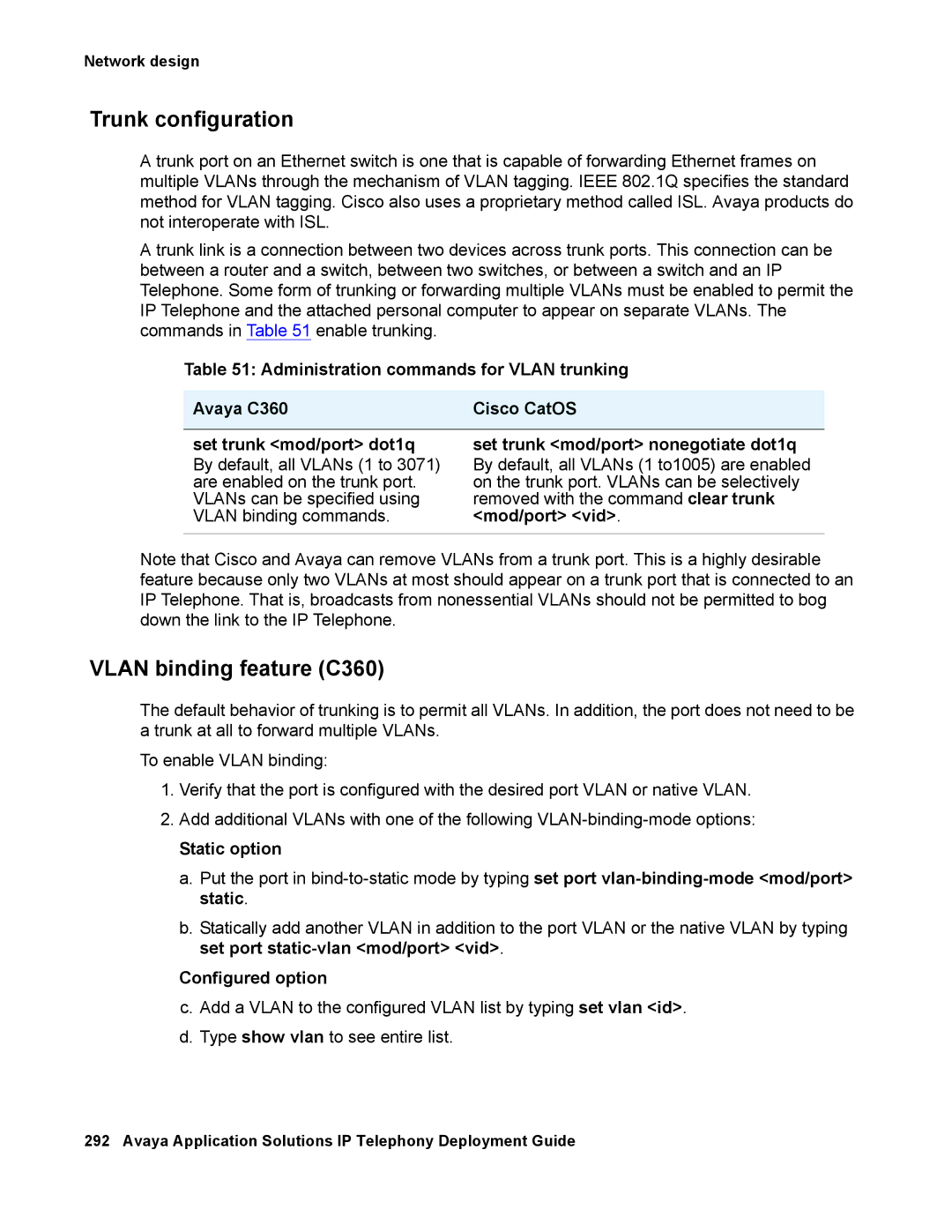Network design
Trunk configuration
A trunk port on an Ethernet switch is one that is capable of forwarding Ethernet frames on multiple VLANs through the mechanism of VLAN tagging. IEEE 802.1Q specifies the standard method for VLAN tagging. Cisco also uses a proprietary method called ISL. Avaya products do not interoperate with ISL.
A trunk link is a connection between two devices across trunk ports. This connection can be between a router and a switch, between two switches, or between a switch and an IP Telephone. Some form of trunking or forwarding multiple VLANs must be enabled to permit the IP Telephone and the attached personal computer to appear on separate VLANs. The commands in Table 51 enable trunking.
Table 51: Administration commands for VLAN trunking
Avaya C360 | Cisco CatOS |
|
|
set trunk <mod/port> dot1q | set trunk <mod/port> nonegotiate dot1q |
By default, all VLANs (1 to 3071) | By default, all VLANs (1 to1005) are enabled |
are enabled on the trunk port. | on the trunk port. VLANs can be selectively |
VLANs can be specified using | removed with the command clear trunk |
VLAN binding commands. | <mod/port> <vid>. |
|
|
Note that Cisco and Avaya can remove VLANs from a trunk port. This is a highly desirable feature because only two VLANs at most should appear on a trunk port that is connected to an IP Telephone. That is, broadcasts from nonessential VLANs should not be permitted to bog down the link to the IP Telephone.
VLAN binding feature (C360)
The default behavior of trunking is to permit all VLANs. In addition, the port does not need to be a trunk at all to forward multiple VLANs.
To enable VLAN binding:
1.Verify that the port is configured with the desired port VLAN or native VLAN.
2.Add additional VLANs with one of the following
Static option
a.Put the port in
b.Statically add another VLAN in addition to the port VLAN or the native VLAN by typing set port
Configured option
c.Add a VLAN to the configured VLAN list by typing set vlan <id>.
d.Type show vlan to see entire list.
